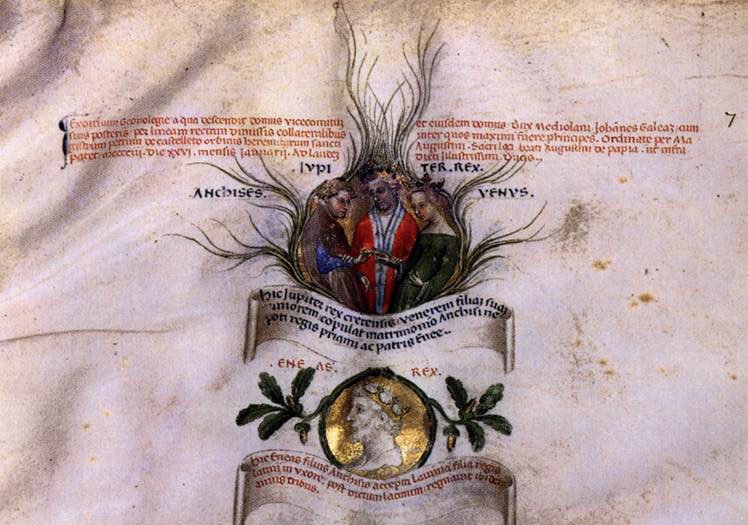THE TAROT WHEEL
TAROT DEVELOPMENT - INTRODUCTION TO THE VISCONTI
In these pages we see how the Tarot might have developed, from its earliest ancestors to the Marseille Tarot. The playing card history section explains how the suit symbols of the Arabic Mamluk cards evolved into the suits we know today: coins, cups, swords and clubs. They were easily adopted because the Western cultural heritage had its roots in the Celtic civilisation, which used the same kind of symbols.
There were no playing cards in Western Europe before the introduction of the Mamluk cards around 1375. There is a document that describes how, in 1227, noble children in northern Italy were taught the virtues with pictures called "carticellas", small painted illustrations. This fact is mentioned in 2009 by Emilio Salas in his book "El gran libro des Tarot". According to him, this information comes from the diary of a French traveller. Unfortunately, he does not specify his sources. In any case, many illuminated manuscripts make extensive use of drawings, and not just for illustration. Gian Galeazzo Visconti had created one of the most famous libraries of his time in his family home in Pavia, with many illuminated manuscripts. His youngest son, Filippo Maria Visconti, was sent here at the age of 10 and remained in Pavia for the next 10 years. He must have spent many hours in the library.
In the 15th century, Italians were very religious, mostly Roman Catholics, and they believed in only one God. They believed that when Roman and Greek mythology told stories about classical gods, these stories were actually based on ancient legends about famous people. Some of them were so famous that they were worshipped as gods.
In 1402 the first Duke of Milan, Gian Galeazzo Visconti, father of Filippo Maria Visconti, died. At his funeral his genealogy was read out in public. His true genealogy had been known for about ten generations. When he became duke, Gian Galeazzo needed a much longer genealogy to show the high origin of his ancestors. His collaborators didn't have an easy job. His genealogy went back 50 generations from father to grandfather and so on, starting with the Trojan hero Anchises, father of Aneas, who was the ancestor of the Romans. According to this genealogy, Anchises was married to none other than Venus, daughter of Jupiter and Juno. This supposed link made the Visconti family direct descendants of Jupiter, the most important figure in the classical Roman pantheon of gods.
The painter Michelino da Besozzo was commissioned to illustrate this genealogy. He completed the document in 1403. The Visconti genealogy illustrated by Michelino still exists. The troops of King Louis II of France transported many of the documents of the Visconti family from Pavia to France. The image below shows the first part of this document, where we see Jupiter with Anchises and Venus on his sides, followed by an illustration of Aneas.


